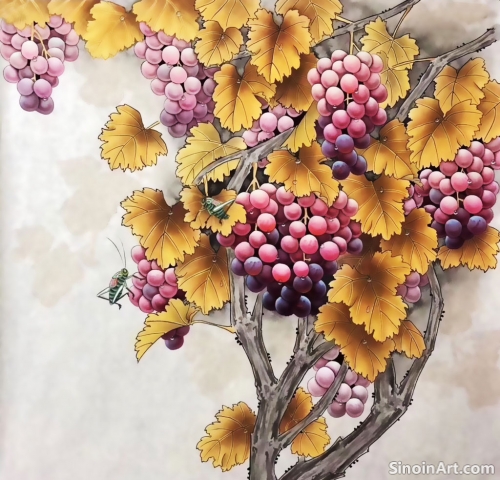The Role of Line in Gongbi: Structure and Expression
|
In the world of Gongbi painting, the line is not just a boundary; it is the very foundation upon which the entire artwork is constructed. Unlike other painting styles that may use broader strokes and washes to create forms, Gongbi relies heavily on the meticulous application of precise, deliberate lines. These lines define shapes, delineate details, and contribute to the overall structure and expression of the painting. The control and nuance present in each line are a testament to the artist's skill and understanding of the art form.  The basic technique of outlining, known as "gougou," is central to the Gongbi process. This method involves creating fine, unbroken lines to define the contours and internal details of the subject matter. The thickness and pressure of these lines can vary, creating a sense of depth and dimension. The lines are not just boundaries but also expressions of volume, texture, and light, adding a dynamic quality to the painting. A skilled artist uses line weight effectively to suggest form.  Line work in Gongbi goes beyond just defining outlines. The internal lines within a form, such as the veins of a leaf or the texture of a fabric, are rendered with just as much precision and care. These intricate details contribute to the overall realism and complexity of the painting. The use of carefully drawn lines creates a sense of texture and allows the viewer to appreciate the intricate detail of the subject matter.  The control of the brush and the application of ink are crucial for creating effective lines. Artists use a variety of brush tips to achieve different line weights and textures. Mastery of ink density, water control, and brush handling are essential for producing precise and consistent lines. This skill is the culmination of years of practice and is often what separates an average work from a masterpiece. Ultimately, the lines in Gongbi painting are not merely decorative or descriptive; they are a form of visual language. They express the artist's understanding of form, composition, and the underlying essence of the subject matter. Through the careful application of line, Gongbi artists are able to translate the complexity and beauty of the world onto a two-dimensional surface. The lines are the skeleton of the painting, the essential structure of the art form. |
Tag : Gongbi line work, Chinese painting lines, gougou technique, brushwork in Gongbi, line expression
Related information
- Learning Gongbi: Steps for Aspiring Artists
- The Gongbi Line: A Foundation of Precision and Expressiveness
- Gongbi and the Depiction of Everyday Life
- Gongbi Painting as a Form of Meditation and Mindfulness
- The Future of Gongbi: Innovation and Preservation
This article provides a guide for aspiring Gongbi artists, outlining the steps involved in learning the art form, including mastering brushwork, outlining, color application, understanding traditional motifs, and the importance of patience.
Gongbi lines are characterized by their fineness, evenness, and consistent width. Artists utilize specialized fine-pointed brushes to create these lines, ensuring that every stroke is deliberate and controlled. The consistent thickness of the lines requires years of practice, and this skill is central to the Gongbi style. It is within the precise lines that the work begins to define itself.
This article explores the use of Gongbi painting in depicting scenes from everyday life, highlighting its meticulous detail, portrayal of common activities, and how these works serve as visual records of daily existence and a particular time and place.
This article explores the connection between Gongbi painting and meditation, highlighting how the meticulous process fosters mindfulness, focus, and a contemplative state of mind for the artist.
This article discusses the future of Gongbi painting, highlighting the importance of both preserving traditional techniques and fostering innovation, and exploring the role of technology and globalization in ensuring the art form's continued relevance.